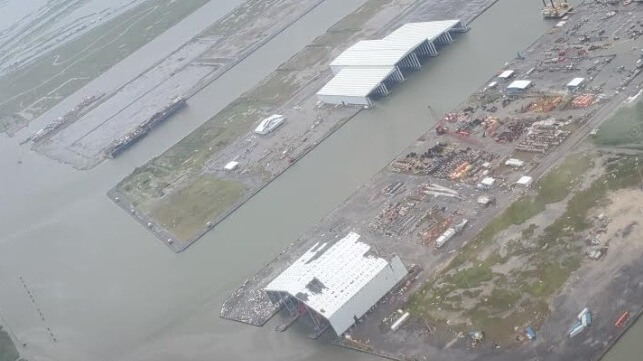Report: Climate Change Could Cost Shipping $25B Per Year

Climate change has the potential to cause $25 billion in losses for shipping every year if no tangible actions are taken to cut emissions, a new report by RTI International and the Environmental Defense Fund (EDF) suggests.
The report suggests that the global shipping and port industry is susceptible to massive infrastructure damage and trade disruption due to climate change impacts.
Climate change has the potential to cause annual damages to port infrastructure that could reach nearly $18 billion by 2100. Worse still, storm-related port disruptions could add another $7.5 billion each year, reflecting the economic losses incurred by ports, shippers and carriers due to port closures and the costs to shipping customers.
Together, these added future costs due to climate change are roughly equivalent to the total annual net earnings for the container port sector in 2019, according to the report.
“Just as the COVID-19 pandemic threw our ports and the global supply chain into crisis mode, the climate emergency will have major consequences for international shipping. In the face of climate breakdown, however, the shipping industry has an early warning bell and an opportunity to act,” said Marie Hubatova, senior manager for EDF's Global Transport team.
She added that by stepping up to reduce emissions and invest in zero-carbon fuels, shipping leaders could help avoid the costly consequences and build a more sustainable future for the critical maritime industry.
The EDF report contends that international shipping has grown enormously over the past quarter of a century, more than doubling in annual trade volume. Due to the growth in combination with shipping’s reliance on heavily polluting fuels, the industry has become a large emitter of greenhouse gases (GHGs), currently accounting for roughly 20 percent of global emissions from transportation.
Effectively, sea level rises, increase in storms and inland flooding that are an impact of climate change are posing direct threats to shipping infrastructure and operations.
With global trade expected to grow in the future, which translates to an increase in the volume of goods transported by sea, climate change is emerging as a major risk to maritime trade volume.
Assuming a steady growth rate, global trade is expected to grow to reach 120 billion tonnes in 2100. Under the worst-case climate scenario, that growth could be stunted by up to nearly 10 percent.
“While our report uses the best information available to paint a picture of the true economic cost of climate change on international shipping, the reality is that these figures are likely underestimating the total scale of the consequences,” said George Van Houtven from RTI.
Global shipping emits two to three percent of global GHGs emissions. Top shipowners and ports are leading the transition to green shipping in order to reduce future climate change costs, making new investments in zero-emission fuels and technology.

that matters most
Get the latest maritime news delivered to your inbox daily.
Many shipping leaders have already endorsed a climate call to action through the Getting to Zero Coalition, which aims for the development and deployment of commercially viable deep sea zero-emission vessels by 2030.
“This report only reinforces the business case for shipping decarbonization to begin now, emphasizing that a just and equitable energy transition is an opportunity for the private sector and developing countries alike,” Ingrid Sidenvall Jegou, Project Director at the Global Maritime Forum.
